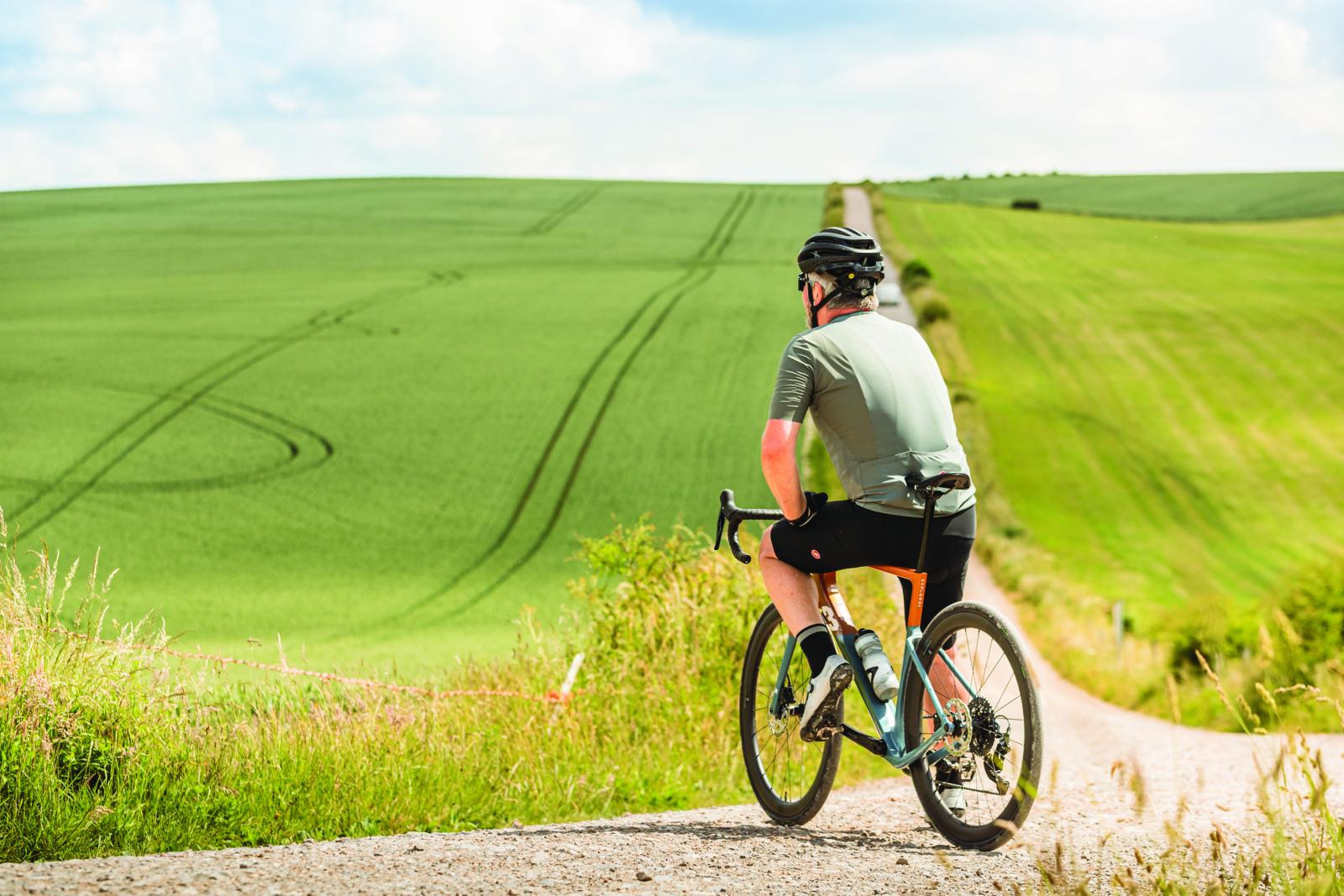We are big fans of the Orca’s distinct angular looks, and we’ve tested the frame in different guises over the years. While we’ve always been impressed with the bike overall its Achilles heel has always been the lower than we’d expect rolling stock on an otherwise excellent bike.
- Highs: Smoothness, sharpness, and much improved value
- Lows: A triple chainset isn’t the top of our list of requirements
- Buy if: You want a bike that blends performance bike handling and smooth rolling comfort to perfection
Well it seems that someone at Orbea has been listening – not only has the base price fallen, making the standard wheel package better value; Orbea also offers a small range of upgrades via its website, and once chosen this is how it’ll be supplied to your local dealer. We chose to up the wheel spec to Kysrium Equipe S, and add an FSA cockpit.
As the frame has remained basically unchanged in its Bronze guise that means cable routing is still all-external. That may hamper the aesthetics compared with the latest smooth internally routed designs, but it does mean that the cable runs for the shifting are straight and simple, so providing you stay on top of the bike's cleanliness and maintenance you’ll experience top quality shifting at all times.
The Orbea’s frame looks like its going to be a tough one, with huge box-section chainstays and the monostay seatstay having similarly large dimensions. Add into that a 31.6 post (albeit carbon) and we were fearing that our hindquarters were going to be in for a bruising time. The big surprise, then, is just how comfortable the Orca feels over coarse surfaces. That big back-end is just perfectly supple, adding smooth rolling to rain coarse damaged road surfaces yet feeling taut enough to match the Orbea’s totally planted feel up front.
At the sharp end the Orca makes the most of its standard parallel 73 degree angles, race-height head tube and short-for-its-size wheelbase. This combination makes the M50 brilliantly balanced: it's as at home on the climbs as it is thrashing along at sprint speeds and barrelling down descents. The only surprise we found on the spec was the inclusion of a triple, almost forgotten in the realms of road bikes thanks to the arrival of the compact 50/34. The FSA Gossamer unit offers a 30/39/50 range complementing the 12-28 cassette out back. The triple is a bit of overkill for most UK climbs, but we could see a use for it on the super steep slopes in the heart of Basque country where Orbea is based.
We made the choice to upgrade the wheels, and are certainly glad we did so. Kysriums represent the higher end of wheels in this price range, and they go some way towards transforming this Orbea's ride – these, and the addition of the included Yksion tyres, are miles ahead of the standard package. Our only criticism is that Mavic ships the wheels 23c-shod as standard: we can’t help but think that if anyone from the manufacturer had ridden on the poor surfaces we deal with in the UK that they’d up these to a more comfortable 25.
We have to say that we only expected the Orca to be a Bike of the Year also-ran for 2014 – after all, it's a frameset that’s been around for a while. But we actually feel that this years Orca has become a serious contender. Revising the price has helped hugely, and being able to upscale the wheels while still coming in cheaper than last years model takes things even further.
As we mentioned earlier, the Orca is a bike that’s always impressed with its cleverly comfortable yet thundering performance. Now we can get all that for less, whilst improving its shortfalls means this Orca rises towards the top of the pile.
This article forms part of Cycling Plus magazine's Bike of the Year 2014 Awards. Cycling Plus is available on Apple Newsstand and Zinio.

